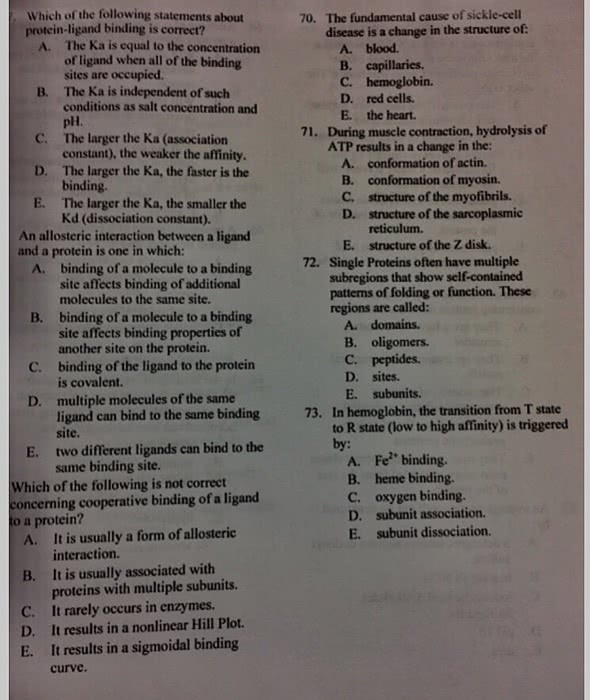CHE 211 Study Guide - Final Guide: Valine, Storage Protein, Peptide

Organic Chemistry 2: Proteins
Myoglobin and Hemoglobin
Myoglobin and Oxygen Storage
Myoglobin is an example of a globular protein that contains 153 amino acid residue in a
single chain; globular proteins have compact spherical shapes because their secondary
structure of the polypeptide chain fold over top of one another
Globular proteins carry out the work of the cells that includes function such as
synthesis, transport and metabolism
Hemoglobin is the oxygen-transport protein of higher animals
Myoglobin is the oxygen storage protein of skeletal muscle; high concentration of
myoglobin has been found in muscles of sea mammals such as seals, and whales that
stay underwater for long periods of time
In the center of myoglobin molecule is the heme-group and it is an essential component
of myoglobin
It is the Fe2+ ion in the heme group that serves as the oxygen
binding site in myoglobin and hemoglobin
Myoglobin has a greater affinity for oxygen than hemoglobin
does this allows myoglobin to transport oxygen from the
blood stream into the cells of the body
Oxygen is transferred from hemoglobin to myoglobin as
myoglobin has a stronger attraction for oxygen than
hemoglobin does
➢ On the right is the structure of hemoglobin; it is also a globular
protein that transport oxygen in the blood
➢ Hemoglobin consists of 4 polypeptide chains (subunits); two of these subunits are alpha
chains and the other two are beta chains; the subunits are held together in the
quaternary structure by the same interactions we talked about earlier (hydrogen
bonding, salt bridges, disulfide links and hydrophobic interactions)
➢ Each subunit of hemoglobin contains a heme-group that binds to oxygen; in
hemoglobin, all 4 subunits (alpha and beta) must be combined together in order for the
hemoglobin to be able to function as an oxygen carrier this means that the complete
quaternary structure of hemoglobin can bind and transport 4 molecules of oxygen
➢ Hemoglobin and myoglobin have similar biological functions; hemoglobin carries oxygen
in the blood and myoglobin carries oxygen in the muscles
➢ Myoglobin that is a single polypeptide chain is about 1/4th the size of hemoglobin; the
tertiary structure of the single polypeptide myoglobin is almost identical to the tertiary
structure of each of the subunits of hemoglobin
find more resources at oneclass.com
find more resources at oneclass.com

